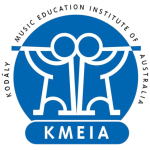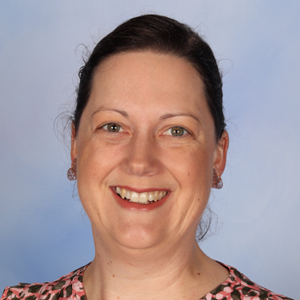 Tammy Kilpatrick has more than twenty years’ experience teaching music. Whilst her teaching spans many age groups, Tammy’s passion is working with young children. She currently teaches at Hillcrest Christian College in their Early and Junior Learning Community’s Music and Choral Programs. She previously taught at New England Conservatorium of Music as well as running do-re-mi classes from home. Tammy holds a Bachelor of Music in Education and Vocal Performance and has been awarded the Australian Kodály Certificate (Early Childhood), a Postgraduate Certificate in Music Play Therapy and a Master of Music, focussing on early childhood music education. Tammy is married to James and is a mum to three boys. Her passion for music in the early years began when she fell pregnant with her first son (who is now 16!). She loves making music with her family and is an advocate for music for all.
Tammy Kilpatrick has more than twenty years’ experience teaching music. Whilst her teaching spans many age groups, Tammy’s passion is working with young children. She currently teaches at Hillcrest Christian College in their Early and Junior Learning Community’s Music and Choral Programs. She previously taught at New England Conservatorium of Music as well as running do-re-mi classes from home. Tammy holds a Bachelor of Music in Education and Vocal Performance and has been awarded the Australian Kodály Certificate (Early Childhood), a Postgraduate Certificate in Music Play Therapy and a Master of Music, focussing on early childhood music education. Tammy is married to James and is a mum to three boys. Her passion for music in the early years began when she fell pregnant with her first son (who is now 16!). She loves making music with her family and is an advocate for music for all.
Day 2
| Time | Title |
|---|---|
| Session 5: 15.05 | Embracing a Multi-Modal Approach in the Lower Primary Music Classroom |
| As music educators we can embrace a multimodal approach in the classroom. By prioritising play-based activities that incorporate movement and visuals in conjunction with the aural stimulus, we can maximise engagement and scaffold learning and assessment for all students.
Concepts such as beat and rhythm, high and low, quiet and loud, must first be experienced through movement. Children may unconsciously keep the beat and perform the rhythm as they move to music. They may show the pitch of a melody as they playfully enact a song’s text. Expressive devices arise innately in games and creative movement, giving meaning and purpose to the play. Visual representation of concepts can deepen understanding. Children may use their bodies to physically represent the rhythm. They may incorporate props to isolate musical elements. Concepts can be further scaffolded through visual means, including manipulatives, flash cards and word walls, with many opportunities to practice concepts before assessing student learning. This interactive workshop will focus on the prepare and practice stages of the Kodály-inspired teaching methodology, including student assessment. Ideas for classroom organisation and visual displays will also be shared. The resources and activities presented will be suitable for 5–8-year-olds. |
|
Day 4
| Time | Title |
|---|---|
| Session 4: 13.05 | Emotionally Responsive Teaching in the Early Childhood Classroom |
| Music by its very nature can calm or excite the listener. Children’s songs and rhymes hold a treasure trove of emotions. They inherently provide a source of regulation and a vehicle for school readiness, as well as conscious learning. Many of the songs and rhymes used by educators in the early childhood classroom possess these qualities. The beauty of these masterpieces lies in their playful attributes.
There is something very special about Kodály-inspired teaching. The art of the teaching sequence and the carefully guided discovery is a passion for many teachers, including me! The choice, ordering and length of activities in a lesson can impact student engagement and learning however, and it is up to the teacher to plan and teach with flexibility in mind. Selecting repertoire and crafting lessons with playful interactions and opportunities to focus, excite and calm students will provide teachers with a palette of colours to create a lesson that is both artful and child-centred. This session will focus on repertoire suitable for 3–8-year-olds. It will feature songs, rhymes, and recordings to add to your collection, or use in new ways in response to the children in your care, including those with diverse needs. |
|


